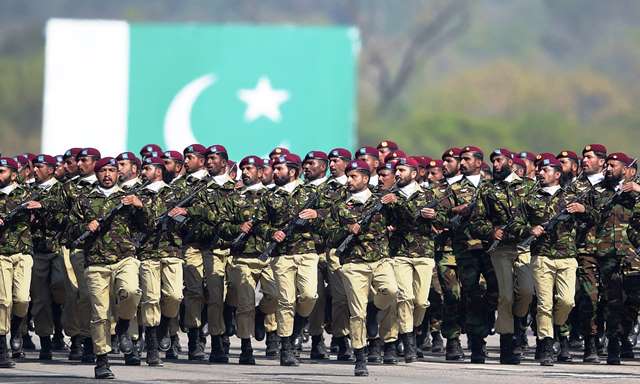Sixty-one years ago, on March 23rd 1956, Pakistan inaugurated its first constitution that declared Pakistan as the Islamic Republic of Pakistan. Till then March 23rd used to commemorate the 1940 Lahore resolution. Within two years, however, Pakistan’s first military coup under Ayub Khan took place and since then March 23rd was celebrated as Pakistan Day.
Over time, instead of celebrating Pakistan’s democratic and republican credentials the day has become a military-dominated event due to a military parade that was started in 1973, to boost military’s morale after its ignominious defeat and surrender in 1971.

In a recent piece Zulfiquar Rao traces the history of March 23rd and makes the argument that there is a need to restore March 23rd as Republic Day so that “as a people” Pakistanis can move forward “historically.” He argues that there is a need to “restore Republic Day to inculcate a passion, fondness and commitment towards a democratic Pakistan- it would add positive energy and a sense of festivity with a sort of PSTD effects for our painful memories of atrocious dictatorships in Pakistan and that of pre-independence servitude to the British.”
Rao argues that the reason why the military has chosen to celebrate March 23rd as Pakistan Day not Republic Day is that “Commemorating it with the 1940’s Lahore Resolution doesn’t allow us to imbibe nationalism without profusely invoking the memories of Hindu atrocities, both real and imagined, on our ancestors.”
Rao refers to the symbolism of the first Republic Day celebrated in 1956 “Indeed it was such a unique distinction as Pakistan ceased to be a dominion of the British Crown and became the first Islamic Republic in the world. It meant that Pakistan will be a democracy. It was also agreed by the then political leadership of the country to celebrate this day annually as Pakistan Republic Day. The same year a commemorative postal stamp was also issued which proudly sported ‘Republic Day’ in bold fonts.”
With the coup of 1958 “when Pakistan was neither a democracy nor did it have any constitution to declare it a republic- the rulers in country could not have certainly celebrated a Republic Day.
So Ayub Khan, who had removed Iskandar Mirza within just over a fortnight of his imposition of martial law, and his cronies found it so convenient to celebrate that day as Pakistan Day, linking it just to Lahore Resolution of 1940. Then onward and until August 1973, as the country was ruled either under dictatorship of Ayub Khan or under one form of interim Legal Framework Ordinances, only Pakistan Day could be celebrated.”
During the 1990s “The idea of celebrating a Republic Day would certainly have looked so remote then. At the end of the 90’s, the rise of another military dictator, General Musharraf, was hardly seen with a shred of surprise who then continued to rule Pakistan till 2008.”
Rao argues that “the political history of Pakistan didn’t offer us the luxury of thriving under continuous democratic regimes or a democratic republic and celebrating it year after year. By extension, our sporadic democratic governments couldn’t enjoy the confidence to restore a fully pronounced Republic Day celebration ever since 1958. Nevertheless, today, we as a nation have moved forward. Pakistan saw for the first time a democratic political transition after a full term in 2013. Even the current government is heading towards the end of its elected term. The domestic outlook of the politics offers optimistic prospects of another round of general elections by early 2018.”
Rao appeals to Pakistan’s political leadership to “spread the conviction in keeping this country a democratic republic and promote celebrating Republic Day pronouncedly instead of reticently murmuring that it is ‘also’ one.”
![]()





